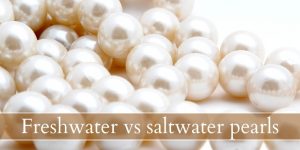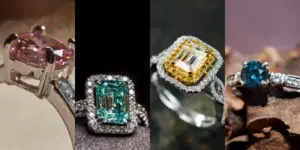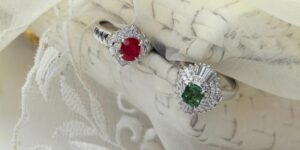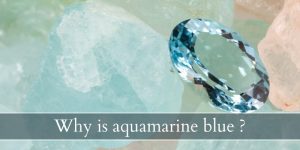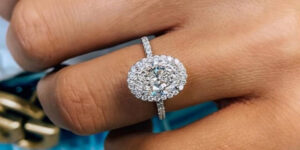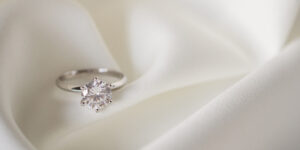Wondering if moissanite is the gemstone for you ? There are a few pros and cons to wearing moissanite, and one of the most common questions we’ve seen asked is whether moissanite gets cloudy or not. This is a concern for many people, especially since moissanite is often sold as a diamond simulant. So naturally, you’d want something that does not degrade in time.
Let’s take a look at whether moissanite gets cloudy or not, whether it’s a good idea for engagement rings, and if anyone will know you’re wearing moissanite at first glance.
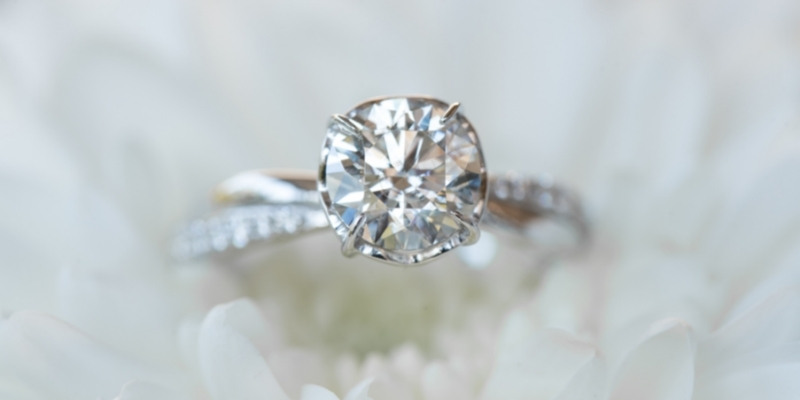
Does moissanite get cloudy ?
No, moissanite does not get cloudy in time because it is very scratch-resistant, almost as tough as diamond. Moissanites score a 9.25 on the Mohs hardness scale, while diamonds score a perfect 10 out of 10. The higher a gem’s scratch resistance, the less likely it is to get cloudy or dull because of accumulated scratches, scuffs, and chips.
Moissanite is one of the gemstones that will not easily accumulate scratches, unless you apply it to another moissanite or a diamond. Not only that, but moissanite also does not yellow with time, it retains its color grade.
However moissanite can indeed get dirty, just like any other gem. In this case a gentle scrub with warm soapy water will get it nice and shiny clean again.
Don’t confuse moissanite with cubic zirconia
Do not confuse a moissanite diamond simulant with cubic zirconia, which is another diamond simulant. They are two very different gemstones, even if both are lab-grown.
Cubic zirconia can indeed get cloudy as you wear it, in several years, because it is a softer gemstone than both diamonds or moissanites. Cubic zirconia scores an 8 out of 10 on the Mohs scale, which is just as much as emerald or morganite. So it much be treated with case, if you want it to last, especially if it’s a large gem that will easily show its scratches.
People often confuse moissanites for cubic zirconia and vice versa, since they are both diamond simulants and thus mean the same thing in most people’s minds. But there are some very strong differences between cubic zirconia and moissanite, despite both of them being inexpensive. Here’s a quick rundown of their differences:
- moissanites as much tougher than cubic zirconia, and do not get cloudy or yellow
- if it’s colored it’s most likely cubic zirconia, moissanite is usually clear
- moissanites sparkle (have more fire) than both CZ and diamonds
- moissanites have a slight doubling of image in the crystal, CZ doesn’t
- CZ is cheaper than moissanite
So if you’re worried about your ring featuring moissanite, don’t be. It’s not going to get cloudy anytime soon and it can easily last you a lifetime. In fact let’s explore this topic a bit.
Moissanite is a great choice for engagement rings
Moissanites in engagement rings are nothing new, not at all. But they are definitely something many people have mixed feelings about mostly because moissanites are rarely sold as standalone gems, they are sold as faux diamonds. Which is doing them a great disservice, since these gems are beautiful in their own way and should be loved for what they are, not what people try to pass them off as.
Durability, moissanites are almost as tough as diamonds
Moissanites are not as tough as diamonds, very true. But they are pretty close, closer than sapphires and rubies actually ! Diamonds score a 10 on the Mohs scale, moissanites score a 9.25, and sapphires and rubies score a 9.0 ! So moissanites are pretty tough, they will withstand most of what you throw at them.
This means you can easily wear them around the house and doing chores because these gems won’t easily chip or scratch. And since they’re so affordable, there isn’t as much worry about hurting them.
Still, moissanites are durable, do not get cloudy, and could easily still look bright and beautiful 40 years after the proposal. Don’t be wary of moissanite rings.
Affordability, moissanites are a fraction of the cost of diamonds
Whenever you’re looking at diamonds you also notice those steep prices. If you’re someone who doesn’t like the idea of spending too much on jewelry, or you’re shopping on a budget, or you’re simply not okay with premium prices out of principle, then moissanites might just be what you’re looking for.
They’re beautiful and have most of the same optical properties as diamonds, but at a fraction of the cost. This means getting a big ring, or one with several stones in it suddenly becomes much more attainable than if you were to pay for that many diamonds.
The usual price difference is that lab-grown diamonds are about 60% of a natural diamond’s price, and a moissanite is about 20% of the price of a lab-grown diamond. So let’s take an example of a $4,800 natural diamond, the same diamond would be $2,880 if it were a lab-grown diamond, and if it were a moissanite it’d be $576, possibly less.
Read also: Can Moissanite Be Colored ? Will Anyone Know It’s Moissanite ?
Looks, moissanites are highly similar to actual diamonds
What makes moissanites such a great deal is the combination between their price point and how similar they are to a diamonds when it comes to light performance. Of course a moissanite is not a diamond, but it’s very close and this is a very good point for many people.
Moissanites offer more fire than brilliance, while diamonds have a balanced fire and brilliance performance, and moissanite have a slight doubling of the image inside the crystal. This means faceting must be done a little differently for moissanites, otherwise they can appear a bit fuzzy or like they have too many facets and too much going on.
Aside from that moissanites are color graded the same as diamonds, they have the same clarity levels, and are hard to distinguish from diamonds unless you are a highly trained professional or perform a series of tests.
Will anyone know it’s moissanite ?
Most people won’t know you’re wearing moissanite if you don’t tell them. This is something you need to remember, and not feel self-conscious about. Unless you’re actively lying about the gem, there is no reason to feel bad about wearing moissanite instead of diamond.
The only people who may know it’s moissanite are:
- you
- a highly trained professional with a very sharp eye
- a diamond fan who knows exactly what a diamond should look like in that specific cut
Unless those people are holding a magnifying glass to your moissanite, they won’t easily notice it’s moissanite. Wear your moissanite with pride, and do reply honestly when someone asks what you’re wearing. Gem-shaming is so last millenium.
Can moissanite pass a diamond test ?
Most of the time a moissanite will pass a basic diamond test, which is a simple tester pen that measures how well the gem will conduct heat. Both moissanite and diamond are amazing heat conductors, so a moissanite will read as a diamond.
But if your moissanite is tested with a specific tester that is also calibrated for moissanite ? Not a chance. There are also testers designed specifically to sniff out moissanites pretending to be diamonds. And there are also laboratory tests.
So to answer the question in short, a moissanite will pass the usual, cheap tester that only looks for heat. Most people don’t use more than that. However more expensive and higher parformance testers will indeed show that it’s a moissanite.
Moissanites are gemstones of their own, and they did start out as diamond simulants but they are so much more than that. And of course if you try and intentionally fool someone into thinking a moissanite is a diamond, they will be understandably upset. We think it’s time to sell moissanites as what they actually are – moissanites. Beautiful, sparkly gems that do resemble diamonds, but are a wholly different gemstone made up of different elements and that have their very own charm.

I’m the main author for jewelrymaterialguide.com. I started this site after we did tons of research before our wedding and noticed that there is information about rings, jewelry, and so on that is really hard to find on the internet.

